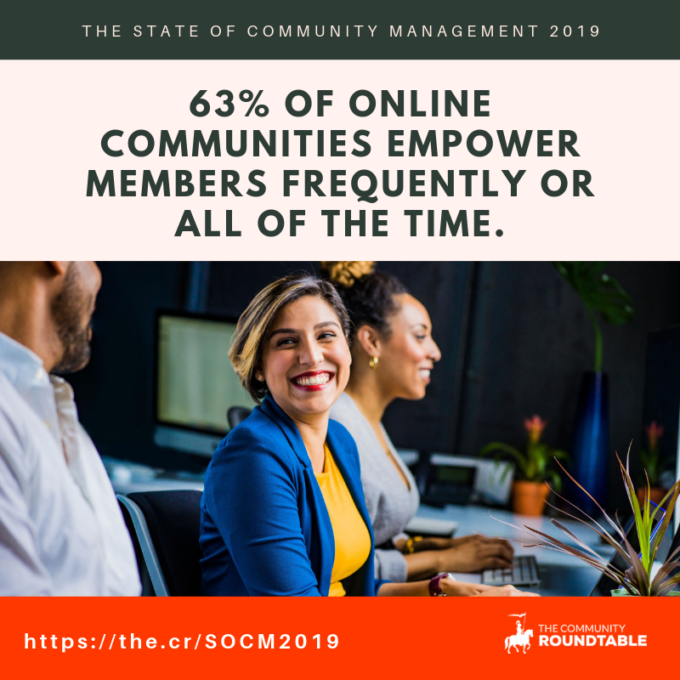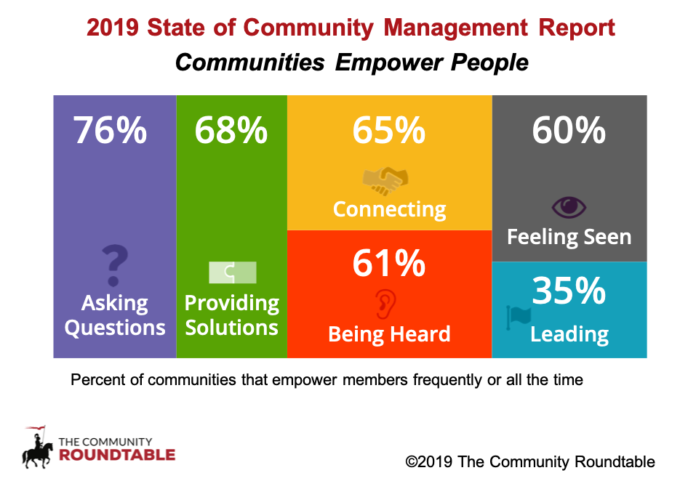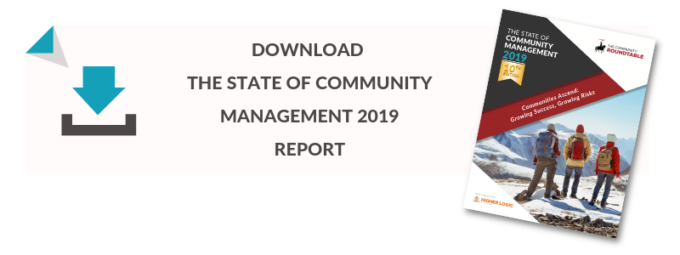
Behaviors are the repeating patterns, or fractals, that makeup culture. Ultimately, culture determines what is possible economically. by looking at language and the engagement behavior it prompts, culture can be seen and measured. does no one respond after an executive speaks? That may suggest a closed, anxious culture. do they respond, but with defensiveness, blame, or anger? You may have a toxic culture on your hands. do people ask a lot of questions? That suggests a supportive culture. do people debate openly? That suggests a high trust culture, with room to challenge each other.
Organizations that understand behavior and how to influence it have a significant competitive advantage over those that don’t. Organizations that understand behavior, know how to impact it, AND are trusted have even more of an advantage. Building that foundation of trust starts with empowering individuals.

63% of communities empower members frequently or all of the time. That empowerment comes in a range of forms – feeling seen, being heard, providing solutions, and taking leadership initiative. It’s easy to see these numbers, nod, and move on, but empowering people to feel seen and heard is no small achievement.
It is the access point for individuals to feel like they matter, are accepted for who they are, and feel like what they have to offer is meaningful. That empowerment directly impacts whether and how often they share their expertise and is the foundation for innovation because it impacts motivation, engagement, productivity, and creativity.
When individuals are inspired, engaged, and empowered they fuel a self-reinforcing positive feedback loop. Success breeds success because people see engagement rewarded, increasing their comfort in engaging themselves. People live up or down to the expectations set by those around them – and their imaginations and ambitions are limited or expanded based on what they can see in their communities. The culture of a community has the power to limit or empower its members. Our research shows that, in intentionally-managed communities, members feel a high rate of empowerment – and engage at equally high rates.

Note: This post contains content originally published in the State of Community Management 2019 report. Download your free copy here.
